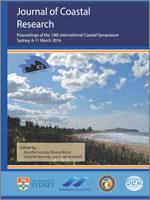Dougherty, A.J.; Choi, J-H., and Dosseto, A., 2016. Prograded Barriers GPR OSL = Insight on coastal change over intermediate spatial and temporal scales. In: Vila-Concejo, A.; Bruce, E.; Kennedy, D.M., and McCarroll, R.J. (eds.), Proceedings of the 14th International Coastal Symposium (Sydney, Australia). Journal of Coastal Research, Special Issue, No. 75, pp. 368–372. Coconut Creek (Florida), ISSN 0749-0208.
Sea level is predicted to rise ∼1m by the next century but the response of sandy shorelines is unknown. Understanding past centennial-scale coastal change is crucial to forecast erosion and prepare vulnerable communities/infrastructure for the impact of climate change. To predict intermediate-scale shoreline behavior, models of short-term morphodynamics along beaches and longer-term coastal landscape evolution are integrated. However, limitations exist as process-based engineering models depend on wave climate and beach profile data restricted to historical records (decadal at best), while large-scale coastal behavior models are based on general stratigraphic data inferring evolutionary trends over millennia. Detailing the stratigraphy of paleo-beachfaces preserved beneath Holocene beach ridges, and accurately dating them, could fill this gap by allowing short-term records of present-day beach morphodynamics to be extended over hundreds and thousands of years. This paper aims to demonstrate how using Ground-Penetrating Radar (GPR) and Optically Stimulated Luminescence (OSL) on prograded barriers can achieve this. To illustrate the potential of these methods, decades of research from strandplains in North America, New Zealand and Australia are synthesized to show how: 1) mapping the geometry of paleo-beachfaces can provide Holocene storm records, 2) digitizing the height of paleo-beachfaces could reconstruct sea-level curves, and 3) calculating barrier lithesome area/volume will quantify sediment supply with respect to accommodation space. Storms, sea level, and sediment supply are essential components determining beach behavior; this proposed methodology can yield empirical data on these mechanisms over the centennial-scale providing insight, and input to models, critical for protecting coasts threatened by global warming.





